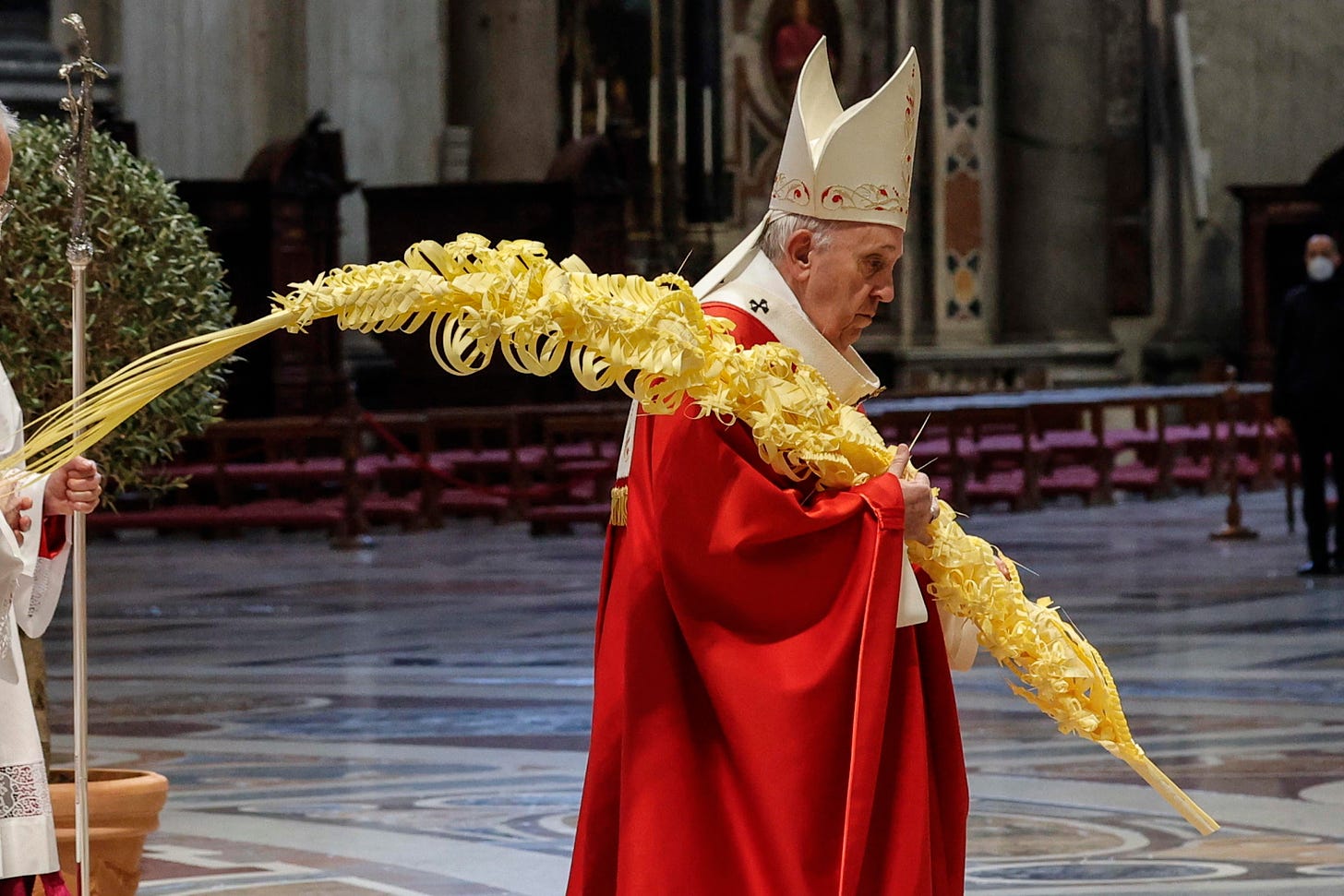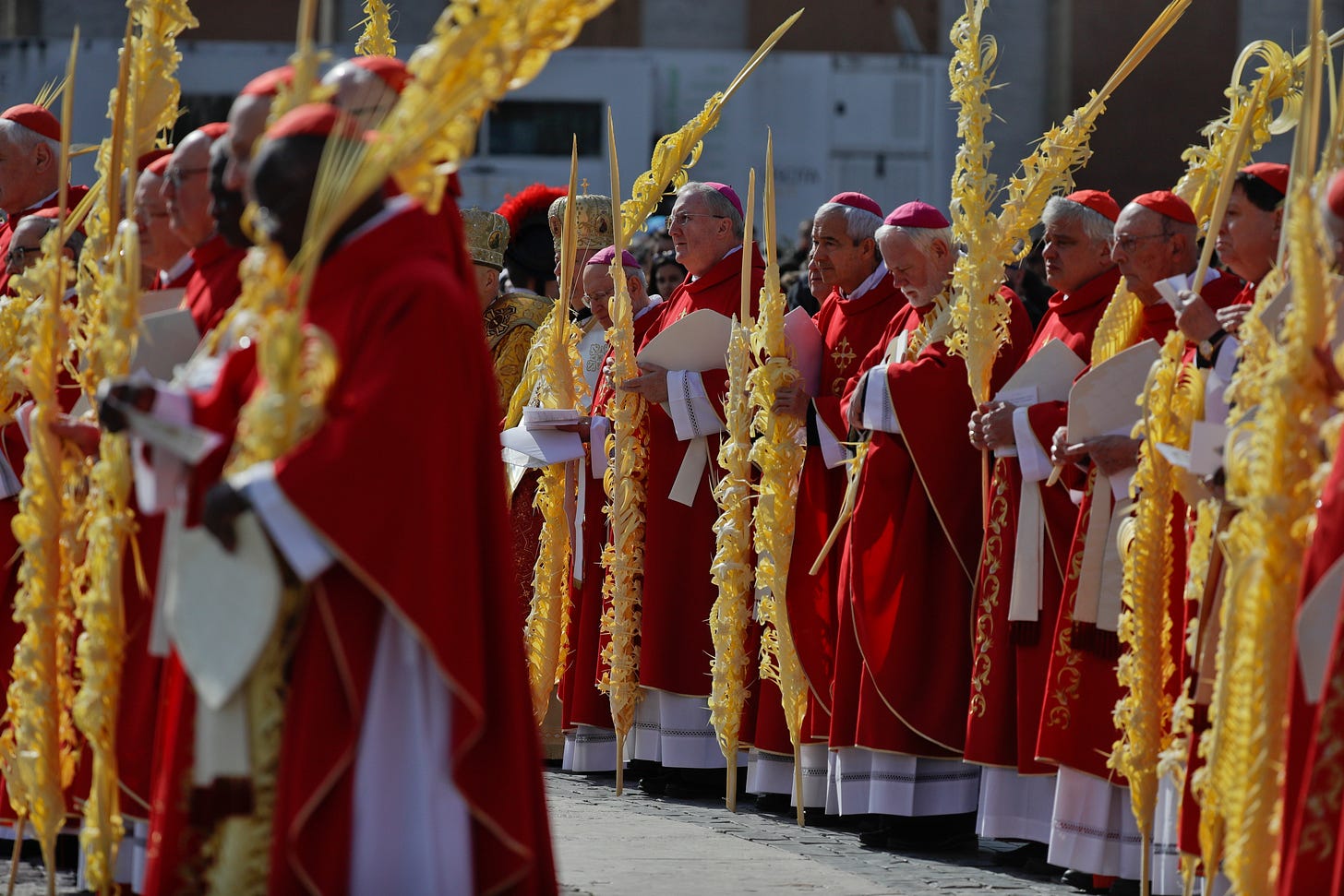Next weekend is Palm Sunday, the start of Holy Week. Around the world, Catholics will commemorate Jesus riding into Jerusalem on a donkey ahead of his Passion, as the crowds laid palm branches at his feet.
But while most Catholics will receive simple palm fronds at Mass, the pope and cardinals in St. Peter’s Square will be carrying elaborate palm weavings known as “parmureli.”
These hand-braided palm creations are meant call to mind the Trinity. They come to the Vatican from the towns of Sanremo and Bordighera, in the northwestern Italian region of Liguria. This region, along the Mediterranean, is known for its lush palms.
But the reason the parmureli come from Liguria is actually more complex than just having beautiful trees – and more interesting.
As the story goes, in 1586, Pope Sixtus V ordered a nearly 85-foot Egyptian obelisk to be moved from the nearby Circus of Nero to the center of St. Peter’s Square.
The obelisk weighed 350 tons and required more than 900 men to move. A crowd gathered to watch as it was raised into its new location in St. Peter’s Square. Knowing that there was little room for error, given the massive size of the obelisk, the pope strictly ordered that complete silence must be maintained in the square. Anyone who spoke would be executed.
As the obelisk was being raised, however, the weight of the pillar began to strain the ropes, which started to fray. The obelisk began to sway dangerously.
A sea captain in the crowd, Benedetto Bresca, saw what was happening and cried out, “Water on the ropes!” As an experienced sailor, he knew that wetting rope tightens and strengthens it. The head of the project heeded Bresca’s advice and had water poured on the ropes, and the obelisk was successfully put into place.
Though Bresca had violated the pope’s order, he had also saved the obelisk - and possibly the lives of some of those erecting it.
Rather than punishing the captain, Pope Sixtus acknowledged his contribution by making him and his descendants the official Vatican suppliers of palms for Palm Sunday.
More than four centuries later, the tradition continues. Each year, the pope receives the largest and most elaborate parmurelo, about 8 feet in height. The cardinals and bishops present at St. Peter’s receive smaller ones. The parmureli have become more elaborate over time, although they are all still hand-woven in Sanremo and Bordighera, thanks to the courage and quick thinking of Captain Bresca.






